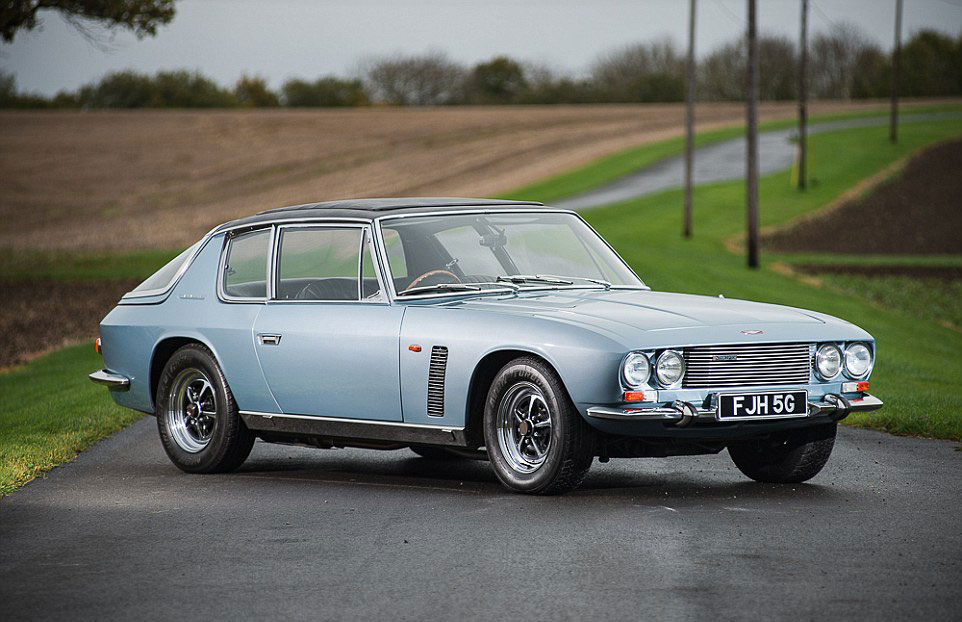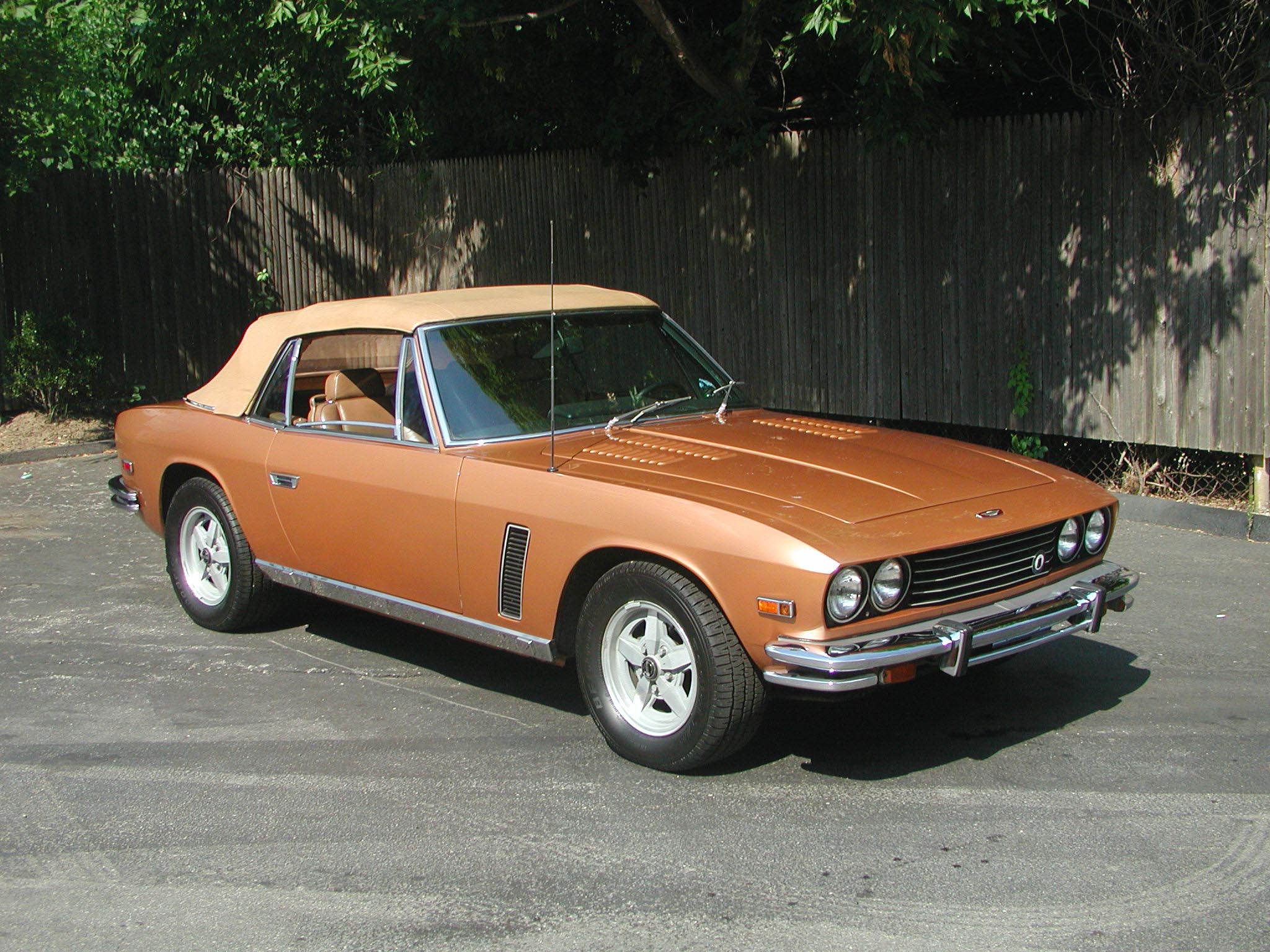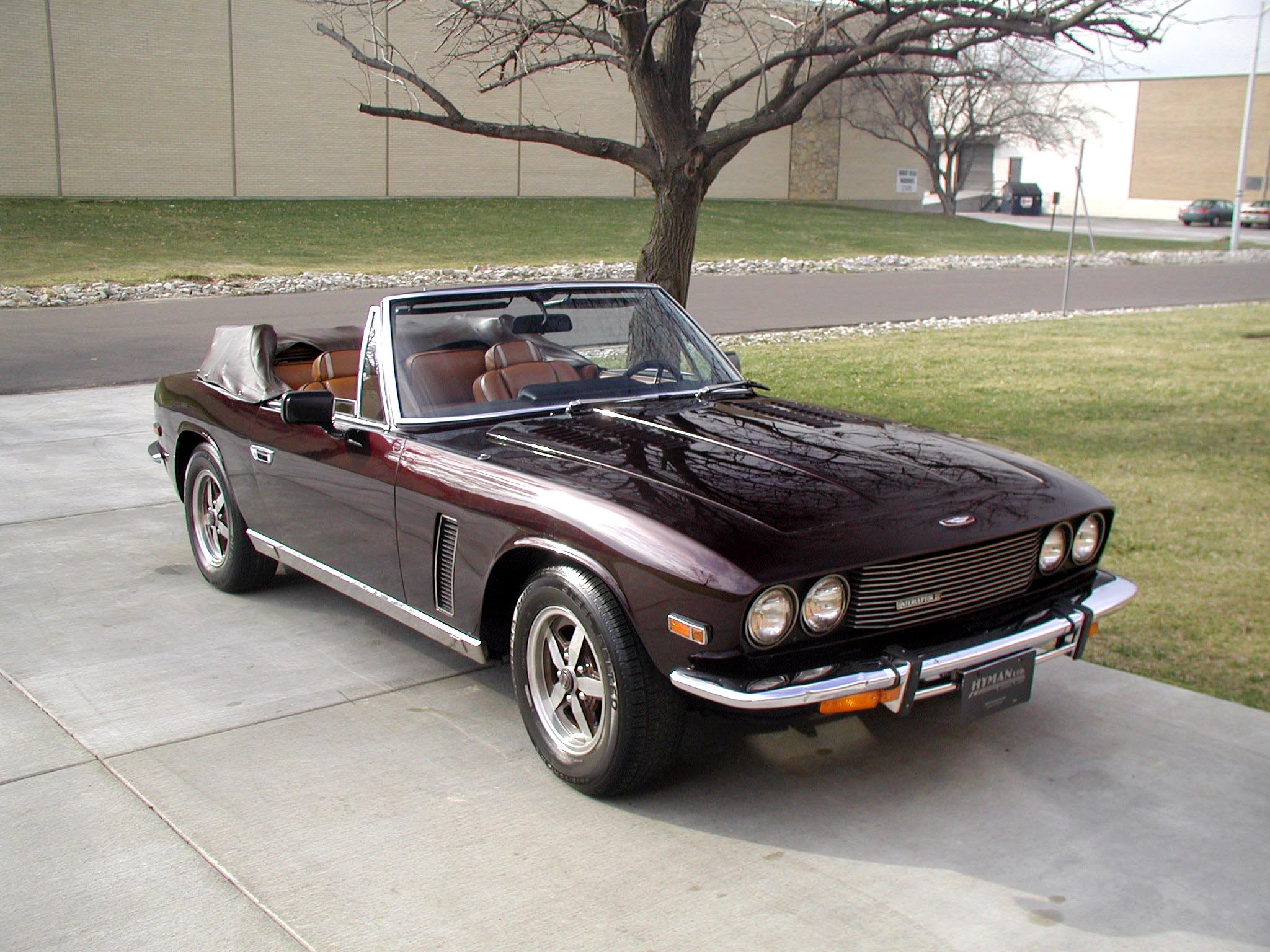Elegant and powerful, why aren’t 1966–76 Jensen Interceptors worth more?
1966–76 Jensen Interceptors are a realistic alternative to an Aston Martin Volante V8. But auction prices have languished in the $25,000–$50,000 range. What gives?
British coachbuilders Allan and Richard Jensen typified Anglo-American sports car manufacturers in the 1930s when they embraced Ford V-8 engines. Clark Gable put the brothers on the map when he shipped a 1934 Ford V-8 chassis to the UK, and Jensen Motors built about 65 handsome sports models before WW2.
The Interceptor name first appeared in 1949, but Jensen didn’t hit a home run until the fiberglass 541 coupe in 1955. However, the 541’s 4.0-liter Austin six-cylinder engine only provided 130 horsepower and 100 mph. The French firm Facel Vega was using Chrysler V-8s successfully, and when Jensen fitted a 305-hp, 383-cubic-inch V-8 in the CV8 in 1962, it delivered 130 mph.
The CV8 was grotesque, however, and the brothers retired in 1966, on the verge of bankruptcy. But then American Kjell Qvale joined Jensen’s board, and his enthusiasm for European style led to a new Interceptor. Designed by Touring and built by Vignale, it was one of the most dramatic supercars of the 1960s.
The “Gentleman’s Express”

With its four headlights, rear-set greenhouse, and fishbowl hatchback, the 2+2 “Gentleman’s Express” combined an English interior of leather, wood, and Smith’s gauges with elegant coachwork, a low-maintenance drivetrain, and impressive performance. Despite weighing 4000 pounds, the first 325-hp Interceptor recorded 0–60 mph in seven seconds and a top speed of 135 mph.
Unfortunately, the combination of weight and power resulted in only 10 mpg, and a rise in fuel prices is partly responsible for the modest appreciation in Jensen values over the past 40 years. Big, thirsty 1970s cars are viewed today with the same enthusiasm as leisure suits, fat sideburns, and 8-track tapes.
Interceptors were never cheap, costing $8124 in the U.S. in 1967 (more than $60,000 today), increasing to $26,650 in 1976, the model’s final year. Jensen Museum figures indicate sales figures of 1024 MK I Interceptors (1966–69); 1128 Mk II models (1969–71), which introduced power rack-and-pinion steering, power brakes, and windows; and 4255 MK III models (1971–76). Interceptor sales ultimately totaled 7141, including 456 convertibles from 1973–76. Other variations include 385-hp 150-mph SP (Six Pack) models with louvered hoods—232 were built from 1971–73—and approximately 46 peculiar notchback coupes from 1974–76.
20180608170540)
20180608170610)
Adopting the 440-cu-in engine in 1971 merely added to fuel costs, as Qvale took over the financially troubled company. His new Mk III standardized many options like air conditioning, and introduced four-wheel disc brakes.
Jensen’s high point was probably the 1967–71 FF, an extraordinary tour-de-force fitted with Ferguson four-wheel drive and Dunlop Maxaret anti-lock brakes. Four inches longer than the Interceptor, it featured two vertical vents in the front fenders instead of one. FFs cost almost $12,000 in 1967 and buyers were skittish. Only 320 were sold in six years: 195 Mk I (1966–69), 110 Mk II (1969–71), and just 15 Mk III (1971).
Not worth Aston money

Since an Interceptor fills a similar niche as the Aston Martin Volante V8, it’s curious that auction prices haven’t climbed out of the $25,000–$50,000 range. Occasional convertibles near six figures.
Examples of the FF seldom come to market, which suggests owners are waiting for a benchmark sale. Hagerty estimates a #3 FF at around $70,000 and a #1 to be about double that, surely a bargain for such technology.
Purists may sniff at Chrysler V-8s, but they are reliable, without any $10,000 engine-out services. The most obvious handicap is the absence of manual gearboxes. Only 24 Interceptors were fitted with four-speed boxes early on, and a transplant would be expensive but possible. All FFs were fitted with the 727 three-speed automatic transmission.

20180608170557)

The valuation problem was pinpointed by Doug and Keri Meyer, who founded Jensen parts supplier K&D Enterprises around 1980. Meyer remarked in an interview before he retired in 2015 that nothing ruins a marque more than devaluation. While wealthy original owners seldom had electrical problems, later owners attempted cheap fixes—with disastrous results.
Two issues have dogged these handsome cars since Day One. The first is rust; the early Vignale-built cars were fearful rusters, and those built in Jensen’s West Bromwich factory weren’t much better. Wheel arches, floors, and hatch surrounds are vulnerable. The second connects electric faults with sudden conflagration, which led to the factory fitting fire extinguishers. Meyer blamed later owners for fitting the biggest Sears Die-Hard battery, which overwhelmed relays and fuse boxes.
Dreaming of a Jensen?

The Interceptor’s collectible future is bright, provided you can find a rust-free example and realize you are restoring a large car (the leather interior requires five hides). The driveline is fundamentally sound and mechanical parts are available, although body panels, glass, bumpers, and trim can be tricky. K&D Jensen, of Boyds, Maryland, and Delta Motorsports, of Phoenix, should be able to help.
Interceptors were prized when new, but they were often garaged indefinitely when fuel prices rose. Buy the best example you can find and take your time. It’s on your side.
20180608170507)


An excellent brief article by Paul Duchene.
I owned and drove on a daily basis for almost ten years, a 1974 SP, commuting from the foot of the Dandenong Hills to Latrobe Street in the City. Fuel consumption costs were challenging but worth every penny. The torque capability was frightening and ironically, I have always been somewhat of a coward on the high speed front.
Besides, the max limit anywhere on the roads in Victoria is 110kph.
LVC105 was imported directly to Melbourne, Australia as a new car ( not by me ) with the associated advantages.
I very much wish that I had kept it but school fees and wine purchases sealed it.
Also, I was in education not stockbroking or legal !
Yes, they are rarely seen at auction here and I have seen three of any version on the road in many years. They are a truly superb design, combining outstanding elegance and distinctive design.
I am a forty niner and must say I occasionally look out for the possibility of once again owning a Jensen Interceptor but will need to pay for one in tgd very best of condition.
Very best wishes to those who own and are driving one.